
Gardening isn’t just a way to beautify your yard—it’s also a surprisingly effective way to stay active and burn calories! While you’re out there digging, planting, weeding, and pruning, you’re not only enhancing your outdoor space but also giving your body a full workout.
These activities, like asking how many calories does weed whacking burn, can reduce stress, ease anxiety, improve memory, and boost self-esteem.
Even more impressive, gardening can help you burn calories and shed some pounds if you pick the right tasks.
If you’re bored with the treadmill and want a more enjoyable way to stay fit, gardening offers a double benefit: exercise that helps you get in shape while creating a beautiful garden at the same time!
Get inspired to garden and reap the rewards of a healthier lifestyle. I’ll break down the calorie-burning potential of different gardening tasks, helping you motivate yourself to beautify your home and stay in shape.
We’re Not Getting Enough Exercise — and It’s More Important Than Ever

As of 2022, only 22.5% of U.S. adults meet the federal guidelines for both aerobic and muscle-strengthening activities [1], according to data from the CDC. This statistic highlights the ongoing struggle many people face in maintaining regular physical activity.
Moreover, according to the Office of Disease Prevention and Health Promotion, only 1 in 4 adults and 1 in 5 adolescents [4] receive the recommended amount of physical activity each week.
These trends are dangerous as a lack of regular exercise is linked with a number of health problems, including overweight and obesity, diabetes, cancer, heart disease, and other chronic diseases [5].
Regular physical activity, on the other hand, is protective in many ways, including:
- Helps protect the brain, decreasing the risk of dementia by 50 percent.
- Reduces the risk of stroke by two-thirds for men and by 50 percent for women.
- Cuts the risk of a heart attack in half with just 3 hours a week of activity.
- Maintains muscle strength, which is critical to performing daily activities as we age.
- Supports bone and physical health.
- Reduces mood swings and helps maintain optimal mental health.
- Boosts the immune system and helps people avoid diseases like the common cold and flu.
Unlocking the Health Benefits of Gardening: A Fun and Effective Way to Boost Longevity and Fitness
According to a 2012 study [2], leisure-time exercise is even associated with a longer life, regardless of body weight. Those who got at least 2.5 hours of moderate exercise a week lived an average of 3.5 years longer than those who didn’t, and those who got at least 5 hours a week of moderate or 2.5 hours of vigorous exercise a week lived an average of 4.2 years longer. In general, the more physical activity, the longer the life expectancy.
It can be tough to fit exercise in, however, particularly when you have so many other things going on in your life. This is where gardening can help. If you know that your plants need your attention or they may wither and die, that can be a strong motivation to put on your boots and get out there in the dirt.
We have more motivation for you: gardening burns calories. No matter what you do, it will help you use up the calories you’ve consumed, which is good for your waistline and your overall health. Consider incorporating your gardening calorie-burning checklist into your gardening routine to make it both enjoyable and beneficial for your health.
How Many Calories Do You Need Each Day?
Before we dive into which gardening activities burn serious calories, like how many calories does weed whacking burn, let’s quickly cover how calories work.
Calories are units of energy. We get them from food and drinks, and we burn them during activities. For example, an apple has about 80 calories, and walking a mile uses around 100 calories.
Our bodies need calories to function like a car needs fuel. Even when we’re resting, calories power vital functions like breathing and circulating blood.
Today, many of us consume more calories than we need. How many you need depends on factors like age, height, gender, and activity level. A young, tall football player, for instance, requires far more calories than an elderly woman who is less active.
To make it simpler, the National Institutes of Health [3] provides general guidelines:
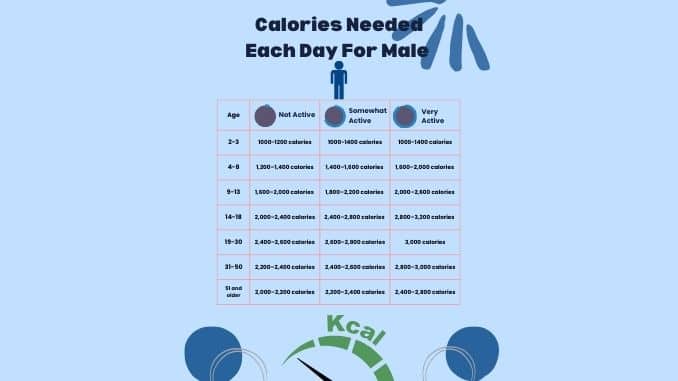
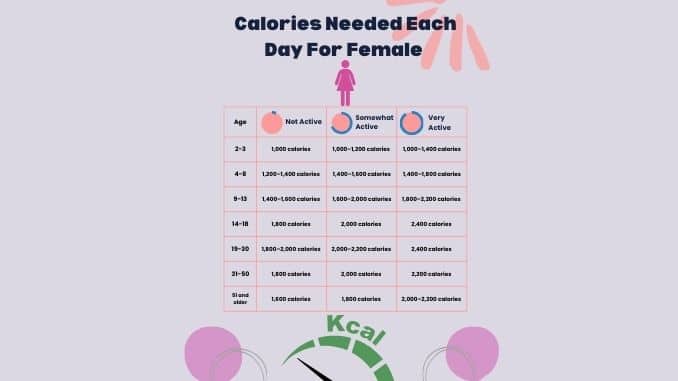
Small Changes Can Lead to Weight Gain
When you eat more calories than your body needs, the extra is stored as fat. Just 150 extra calories a day—like 22 almonds or 9 crackers—can lead to a 5 to 10-pound weight gain in a year.
To avoid gaining weight, you need to burn all the calories you consume. If you want to lose weight, you must burn more calories than you eat. That’s why exercise, along with a reduced-calorie diet, is key to any weight-loss plan.
By staying active and controlling calorie intake, you can gradually shed pounds. The fitter you are—especially with more muscle—the better your body will keep weight off.
When it comes to gardening, you can apply this knowledge to create a calorie-burning checklist that makes your gardening sessions both enjoyable and effective for fitness.
11 Gardening Calorie-Burning Checklist
According to a 2013 study, three hours of gardening can have the same effect as an intense hour-long workout at the gym [6]. Participants worked in their gardens for about five hours a week, which the researchers found added up to about 722 calories.
Below, you’ll find common gardening activities and the estimated calorie burn for each one. Remember that these are only estimates and that results will vary depending on the person. How fit you are, to begin with, how much you weigh, and how hard you work at the activity will factor into your final number of calories burned.
In general, you can increase the intensity of your workout by:
- Doing more things manually, like using a push mower rather than a riding mower
- Changing positions frequently
- Working at a steady, constant speed
Watch your form carefully, as many gardeners end up with back pain because they fail to watch their posture. Always tighten your core muscles to support your back and keep your back straight and aligned with your shoulders and hips. Bend at the hips or use squats to get low.
The following figures, including how many calories does weed whacking burn, can serve as a guideline for planning your weekly gardening activities. You may want to do the more intensive activities one or two times a week, for example, and then vary them with the lower-intensity activities on the other days.
1. Applying Fertilizer or Watering: 20 to 50 calories per 30 minutes
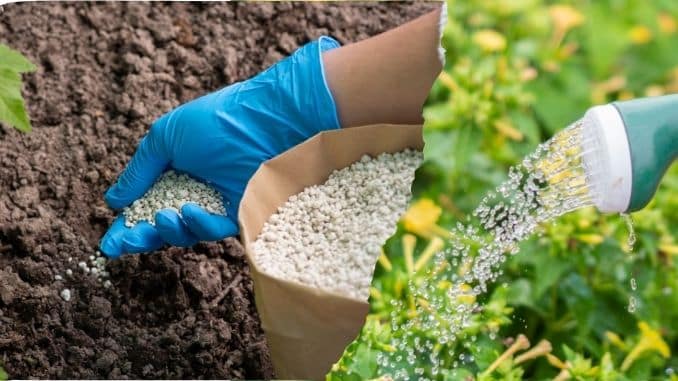
If you’re walking along applying fertilizer, seeding a lawn, or watering your garden, you’ll burn about 20 to 50 calories every half hour. It’s one of the lower-intensity activities on the list, so don’t expect to get too much of a workout here. Use this gardening calorie-burning checklist to offset your higher-intensity workouts on other days.
If you want to get more out of this activity, break it up. Instead of using a hose to water, use a watering can and walk back and forth to fill it.
3. Weeding: 150 to 170 calories per 30 minutes
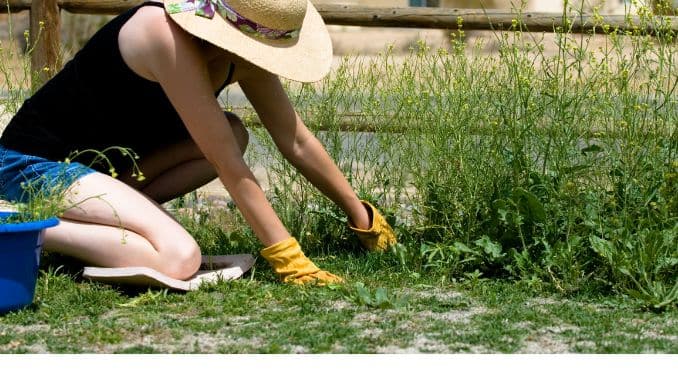
Spend about a half hour pulling weeds from your garden, and you’ll burn about 150 calories. Other estimates put the number a bit higher, at about 170 per 30 minutes. The faster you go and the more vigorously you work, the more you’ll burn. To intensify the workout, use more squats and lunges to get at the weeds rather than sitting down in the dirt. Don’t let your knees go over your toes while following your gardening calorie-burning checklist
4. Planting: 150 calories per 30 minutes

Planting will take about the same amount of effort as weeding, yielding a 150-pound person about 150 calories burned in about 30 minutes [²]. You can increase that number by lunging as you go — lunge, plant, get up, step forward, lunge, plant, and repeat the process for each item.
5. Digging: 190 to 200 calories per 30 minutes
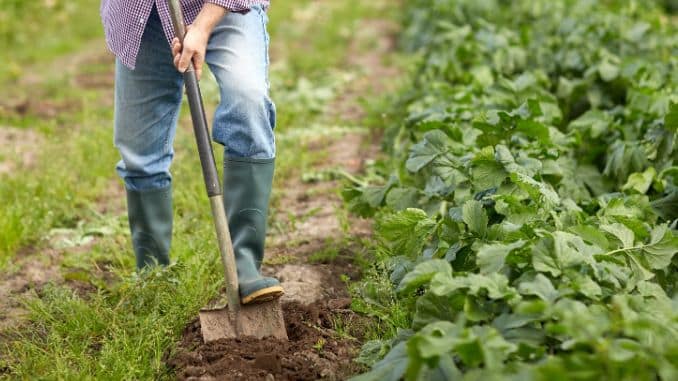
Digging requires more energy than weeding or planting because it relies on muscle power to loosen and remove dirt. It’s excellent for your shoulders and back, but remember to keep your core firm to avoid back injury. If you’re squatting down or lifting rocks out, you’ll also be working your thighs and buttocks. A half-hour will burn about 190 to 200 calories.
6. Clearing Land: 200 calories per 30 minutes
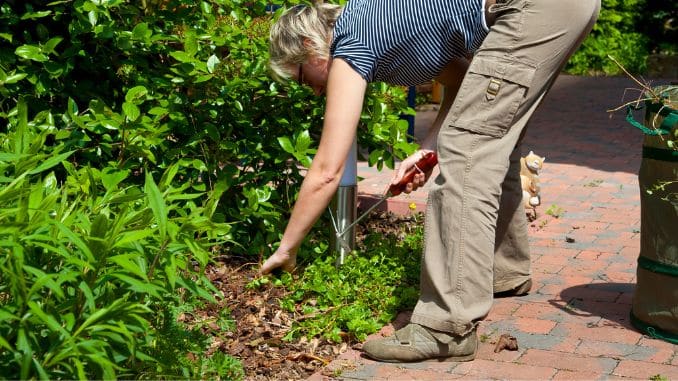
If you’re just starting your garden, you may have to clear a space for it. This is a great activity to do to burn some calories, as it usually combines digging with lifting and carrying, working the entire body. Estimates are that you’ll burn about 200 calories every 30 minutes. The same is true for spading and tilling.
7. Mowing the Lawn: 50 to 250 calories per 30 minutes
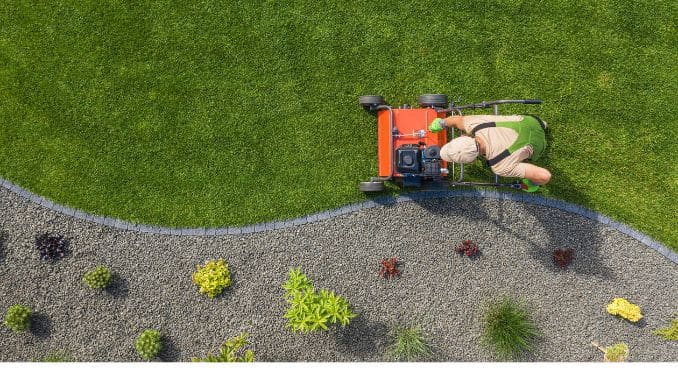
The best way to burn calories by mowing is to use a push mower, which is a great addition to any gardening calorie-burning checklist. Estimates are that you’ll burn about 170 calories every 30 minutes this way. If you use a hand mower (without power), you’ll raise that number to about 250 calories every 30 minutes. A riding mower, of course, requires a lot less energy on your part, as you’ll burn only about 50 calories every 30 minutes.
8. Hedge Trimming: 120 to 150 calories per 30 minutes
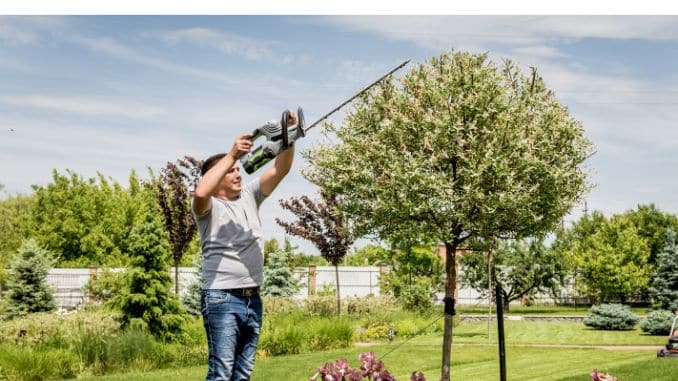
Often, when we trim hedges or trees, we’re using heavy equipment that you have to hold up and move around. That can help burn more calories. Estimates vary — it probably depends on how heavy the equipment is and how intensely we work. Trimming in this way will burn about 120 to 150 calories per 30 minutes.
If you prefer manual trimming, it’s even better, you’re not supporting the weight of a machine, which may help you burn more calories because you have to use more muscles to do the work. Estimates are that trimming by hand will burn about 180 to 200 calories per half hour. You’ll also be likely to build up your bicep and shoulder muscles.
9. Raking: 200 to 400 calories per 30 minutes

The best way to turn this activity into a good calorie burner is to combine your raking and sacking activities. As for me, I like to rake for a bit, then stop and put the grass and leaves in the trash bag.
Combining the two will help you burn about 200 to 300 calories or more per half-hour, although some estimates put it up in the 350 to 400 calorie range. If you stick to raking alone, you’ll cut that number about in half.
To get the most out of your raking, stand with feet about hip-width apart and use a wide raking motion on each side. This is a great workout for your arms and upper body.
10. Laying Sod or Crushed Rock: 200 calories per 30 minutes
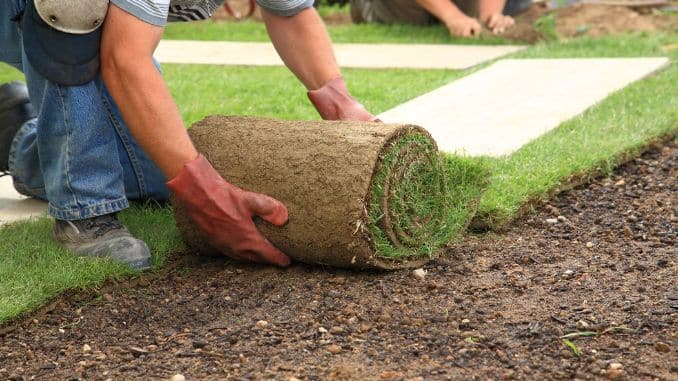
This is a more high-intensity gardening activity as you have to carry the heavy sod pieces or bags of rock, bend and stand to set them into place, and move them around to fit. You’ll burn at least 200 calories an hour at this activity.
11. Moving Waste With a Wheelbarrow: 300 to 400 calories per 30 minutes
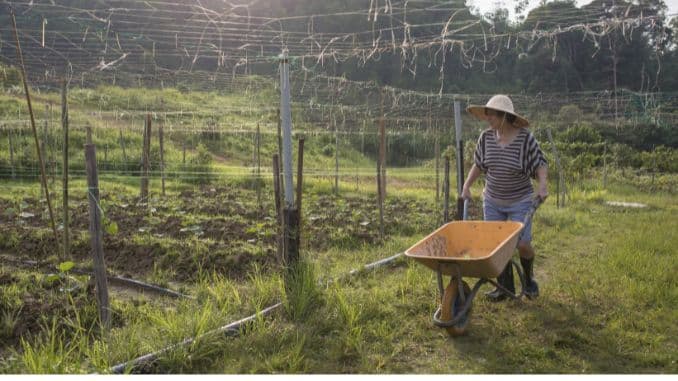
I personally love doing this yard work; it gives me an extra push day to work on my arms.
This high-intensity workout involves lifting a significant weight with the wheelbarrow and its contents, burning about 300 to 400 calories per hour or more, depending on speed and load.
Conclusion
Gardening isn’t just about nurturing beautiful flowers and delicious vegetables; it’s a sneaky way to get a workout and burn calories! You can ditch the gym membership and transform your yard into a personal fitness center.
This passage highlights the fact that many people struggle to fit regular exercise into their lives. Gardening offers a solution – a fun and engaging activity that burns calories and improves overall health.
While you’re weeding, planting, or raking, you’re working multiple muscle groups and getting your heart rate up. The intensity of the workout can be adjusted based on the specific tasks you choose.
If you are looking for ways how to bring back your natural vitality while relieving chronic inflammation and boosting up the natural fat-burning hormones of your body, then check out the Best Foods that Rapidly Slim & Heal in 7 Days program here!
FAQs
1. Is weed whacking a good workout?
Yes, weed whacking can be a good workout. The passage doesn’t provide a specific calorie burn estimate, but it mentions activities like digging and mowing (which require similar exertion) burn 190-250 calories per 30 minutes. The intensity can vary depending on how vigorously you work.
2. Does weed whacking build muscle?
Weed whacking can help tone some muscles, particularly in your arms, shoulders, and core if you maintain good posture. However, building significant muscle mass would likely require additional exercises targeting specific muscle groups.
3. Does weed eating count as exercise?
Yes, weed eating counts as exercise. It burns calories and gets your heart rate up, making it a form of physical activity.
4. How many calories does mowing the lawn burn?
The calories burned mowing the lawn depend on the type of mower you use.

